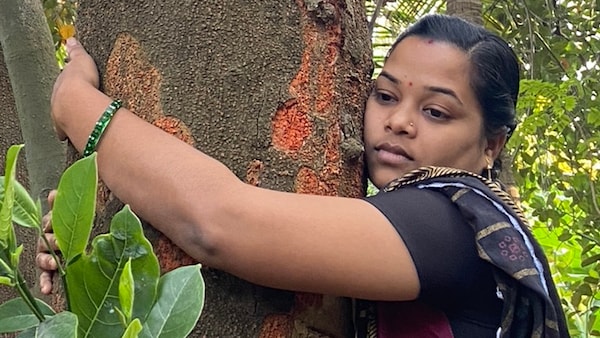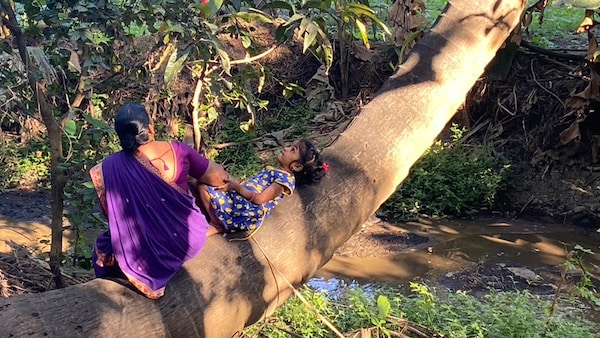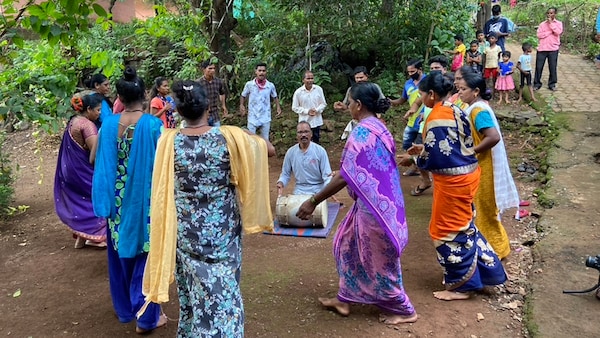The Leopard's Tribe: For Aarey's Tribals, The Forest Is Both Home & Deity
Aarey's tribal community is fiercely devoted to protecting their forest, and safeguarding a harmonious coexistence with nature and the wildlife.

Last Updated: 11.26 PM, Dec 30, 2023
EDITOR'S NOTE: "Climate action can't wait," declared a mission statement for the recently concluded COP 28, i.e. the United Nations Climate Change Conference for 2023. "The beginning of the end (of the fossil fuel era)," was another quotable quote that emerged from the proceedings. Still, as critical reports around COP 28 indicate, there is a gap between such assertions and actual action. Perhaps the answer lies elsewhere. In this series, we're looking at four Indian films that turned a thought-provoking lens on the environment and its custodians — the indigenous people whose lives are deeply intertwined with that of the natural world. These films were screened at the All Living Things Environmental Film Festival (ALTEFF), which wrapped up just a few days before COP 28 and offered, in a sense, a far more encouraging view on the way ahead for climate action.
***
OVI BORHADE, no more than seven or eight years old, is among the younger generation of Warli tribals living in Mumbai’s Aarey Colony. She entertains herself by making faces in the dust, playing with butterflies and goats, climbing trees or swinging on hanging roots with her friends, and — protesting. Her grandmother, Pramila Bhoir, is often referred to as the ‘tigress of Aarey’, and her grandfather is Prakash Bhoir, who collaborated with the artist collective Swadesi on the song The Warli Revolt, which has over 1.6 million views on YouTube.
This family has been at the forefront of the 2019 protests against the proposed metro shed in the area. It’s the story of these sentries of the forest that Miriam Chandy Menacherry lays out in her 2022 documentary The Leopard’s Tribe. When the family isn’t fighting to protect the beloved trees, they’re gathering with other members of the community to challenge a notice asking them to prove they are tribals, else their houses will be treated as illegal slums and they will have to relocate, away from the forest, under the Slum Rehabilitation Authority scheme. In Ovi’s world, protests are as much a part of life as playing with friends and spending time in the forest.
“If something is wrong, how do you express it in a way that’s powerful and real, and yet be nonviolent?” questions Menacherry. She finds an answer in the tribal way of protest. While on the one hand they mobilise and chant slogans, the tribals also paint and sing about their woes, consistently highlighting the role of art in protest. Their art records, expresses and spreads awareness about the things they’re going through. In their drawings, buildings and high rises figure as prominently as the forest does. They aren’t yearning for a time or place removed from the current reality. Instead, they’re responding to every day as it happens and serving as inspiration for a way of life that’s peaceful and respectful of the natural world.

“The protests became their backstory, the unfolding story,” says Menacherry. “But really, for me, the story is about coexistence.” The tribals of Aarey recognise the forest as their mother, which nurtures them with food, fresh water to drink and clean air to breathe. For instance, ’Don’t you need oxygen to breathe?’ snaps Pramila at one of the police inspectors who’s trying to move her on the fateful night when trees were razed down in Aarey.
And in calling the forest their home, they understand that coexistence is the key to a peaceful and successful existence. They realise that wildlife is living in challenging times, with their land being destroyed and reclaimed. So instead of seeing a leopard sighting in the city as a scare, they recognise that it’s the humans who’ve encroached on the wildlife’s home and land, and that such instances are bound to happen. “The reaction of people who are distanced from these situations [of leopard sightings] tends to be very urbanised and we have a very sensationalist, knee jerk reaction,” points out Menacherry. But living in the forest, when the tribals are faced with close encounters themselves, they feel blessed, since the leopard is called Waghoba and is one of the deities they worship. When the family’s daughter is getting married, she’s happy to spot a leopard closeby, and have that be the first blessing she receives. When their pet dog is attacked, the dog is given away elsewhere where he’s safe, and the priority is recognising that this is the leopard’s home. The leopards of Aarey have also adapted to live in close quarters with human beings. The humans stay out during the day, and at around 10 pm, once they’ve retired for the day, the leopards roam freely.

At least while the tribals are in the forest, the leopards will be well respected and wildlife will have space to move. But between development projects that threaten their home and officials who try to declare them illegal slum dwellers and get them removed from the forest, they’re faced with big threats to their way of life. If they’re removed from there, a whole knowledge system and a way of life that coexists in harmony with nature is lost. It’s information that’s based on lived experience and passed down from one generation to the next, and not something that can be learnt overnight. While global leaders meet regularly for summits to discuss the environment, it’s such tribals with ancient knowledge and a deep empathy for the natural world who should be given a voice. Instead of trying to drive them out of their homes, they must be treated as shining examples of sustainable living that we can all learn from.
During one of the protests, Prakash clearly says that the tribals aren’t against development. They’re against the exploitation and destruction of forest land to do it. It’s a reflection of the basic lens they view the world through, in which the natural and developing worlds are both vital and must coexist. “I see them as modern philosophers of our time, I don't see them as dated people caught in a time warp,” says Menacherry. “It’s quite the opposite. We need to go back to our roots and relearn these things that we have forgotten,” she adds.
As the threats to their way of life continue, the tribals of Aarey will, one can be sure, continue protesting. Ovi will also be one of the voices joining in the protests. And all over the globe, young people have been spilling onto the streets, fighting for the planet and their future on it. The question worth considering is this: which side of the barricades are we going to be on, and what will we leave behind for future generations?
Images courtesy ALTEFF

 Premium
Premium